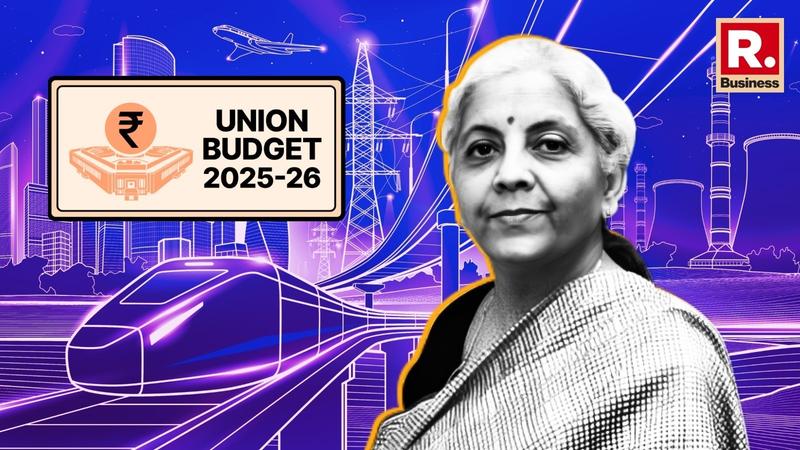Published 13:49 IST, January 16th 2025
Budget 2025 Expectations: India Well Placed, Says Bank Of America Ahead Of Feb 1
Budget 2025: India Set to Meet 4.5% Fiscal Deficit Target by FY2025-26 Despite Economic Challenges – What’s Ahead?

Budget 2025: India's Ministry of Finance is steadfast in its commitment to achieve a fiscal deficit of 4.5% of GDP by FY2025-26, a target set in 2021 to address post-pandemic economic challenges.
According to the report by BofA Securities, the government’s fiscal consolidation efforts have been substantial, with the fiscal deficit gradually reduced from a high of 9.2% in FY2021 to an expected 4.9% in FY2025. The journey towards fiscal discipline has been marked by a careful balancing act between growth and austerity.
‘This pullback along with monetary conditions tightening has had a negative impact on the economic growth momentum, but we still sense that if the government broadly sticks to its deficit targets of 4.9% of GDP in FY25, and 4.5% in FY26, the incremental impact on growth may not be extremely negative,’ as mentioned in the report.
Balancing Growth and Prudence
The government's efforts to reduce the deficit have not come at the expense of economic growth. However, the slowing nominal GDP growth—projected at sub-10% for consecutive years—poses risks to fiscal buoyancy. BofA Securities highlights that while growth-focused strategies have been prioritized, the upcoming budget may explore a recalibration of expenditure, particularly in capital and consumption support.
Capex Push Amid Challenges
Capital expenditure (capex) has been a cornerstone of the PM Modi administration, with allocation reaching 3.2% of GDP in FY2024.
‘A significant highlight of the second term of PM Modi was the doubling down on Capital Expenditure increasing it to 3.2% of GDP in FY24,’ as mentioned in the report.
Yet, execution gaps and capacity constraints have led to a shortfall in FY2025 spending, which is expected to reach only ₹9.5 trillion against the budgeted ₹11.1 trillion. For FY2025-26, a significant capex boost to ₹12 trillion is anticipated, emphasizing infrastructure development and a higher multiplier effect on economic growth.
Despite these efforts, capacity bottlenecks and slower project implementation have hindered the full realization of capex goals. States are expected to play a pivotal role, with schemes like the “Special Assistance for Capital Expenditure” being leveraged to enhance infrastructure investments.
‘ the center’s flagship ‘Scheme for Special Assistance to States for Capital Expenditure’ that provides long term interest free loans to states for which INR1.5trn was allocated for FY25, is likely to see easing of norms to improve offtake and achieve full utilization,’ as mentioned in the report.
Revenues: Holding Steady
Tax revenue growth, though steady, reflects the challenges of a cooling economy. The net tax-to-GDP ratio stands at a healthy 11.6%, supported by robust personal income tax collections.
However, the slowing momentum in corporate earnings and GST collections is a concern. GST growth is likely to moderate to mid-single digits, reflecting weaker discretionary spending trends.
BofA Securities suggests that speculation around individual income tax rationalization remains, but significant changes are unlikely. Meanwhile, the government aims to simplify tax compliance with a potential overhaul of the Income Tax Act, 1961, to improve adoption of the new tax regime.
Debt, Not Deficits: A New Fiscal Mantra?
As fiscal consolidation progresses, the government may pivot towards a debt-focused fiscal framework. Debt as a percentage of GDP has remained stubbornly high despite periods of deficit reduction. Transitioning to a debt-reduction approach would necessitate balancing growth, monetary conditions, and fiscal prudence. The report suggests that primary deficit, rather than fiscal deficit, may become the primary fiscal anchor in this new framework.
‘ it would also mean that the need to balance monetary conditions which anchors borrowing costs, nominal growth which drives revenues and denominator of debt, and fiscal prudence which reduces primary deficits would be critical, for the success of the new framework,’ reads the report.
Expenditure Trends: Quality Over Quantity
Revenue expenditure is projected to remain flat at ₹39 trillion in FY2025-26, growing by just 2.1%. Capital expenditure, however, is expected to rise significantly, with a renewed emphasis on frontloading investments in the first half of the fiscal year. The government’s push to streamline subsidies has been aided by lower global crude oil prices, though allocations for welfare programs like PM-Kisan and Ayushman Bharat may see modest increases.
‘schemes such as PM Awas Yojana (Housing scheme), Ayushman Bharat (Health insurance), PM Gram Sadak Yojana (Rural roads development), PM-Kisan Samman Nidhi Yojana (cash transfer to farmers), and MSME support schemes that may see an increased allocation,’ as mentioned in the report.
Looking Ahead: Reforms and Challenges
To address the stagnation in manufacturing, the government is expected to extend the Production Linked Incentive (PLI) scheme to sectors like electronic components. Additionally, export incentives and infrastructure development initiatives could feature prominently in the budget.
Despite these plans, BofA Securities warns of a potential GDP growth slowdown to 5.4% in Q3 FY2024. Recovery hinges on supportive fiscal and monetary policies, with GDP growth projected to rebound to 7.0% in FY2025-26 if conditions align.
India’s FY2025-26 budget, therefore, emerges as a crucial document that balances fiscal discipline with economic growth ambitions. While challenges persist, strategic capital investments, revenue optimization, and fiscal reforms could enable India to turn the corner from red to green lights on its fiscal roadmap.
Updated 14:10 IST, January 16th 2025